Top Tier CPU Air Coolers Q3 2015: 9-Way Roundup Review
by E. Fylladitakis on July 6, 2015 8:00 AM ESTThe Cryorig R1 Ultimate
Cryorig is a company that popped literally out of nowhere in 2013. They claim to be a company founded by experts with previous experience at other well-known companies, who banded together to both make a name for themselves and to offer "the best of all worlds". The R1 Ultimate that we have here today is the largest, most powerful cooler that they currently manufacture.
We received the R1 Ultimate well packed in a large cubic cardboard box. Everything inside the box is well packed and the bundle is well presented. Cryorig supplies the necessary hardware for the installation of the cooler, a tube of quality thermal grease and a long shank L screwdriver tool. The screwdriver tool is necessary for the installation of the cooler, unless if there is a >170 mm shank Philips PH2 screwdriver available. They also provide a third set of wire clips, for the installation of a third cooling fan.
The Cryorig R1 Ultimate is a very large dual tower cooler. Plastic frames partially cover each tower and are used as supports for the two 140 mm cooling fans. The fans are preinstalled and removing them is not necessary for the installation of the cooler. Each of the two towers has two series of fins. The silver front half of each tower consists of 42 fins, the black rear half of 53 fins. The company claims that by reducing the spacing halfway across each tower, they can accelerate the air exhaust, forcing the hot air to exit the tower faster. It is a rather peculiar approach, as a uniform gap across the entire tower could achieve the same air backpressure/speed without the extra turbulence and noise that the transition will cause. Perhaps Cryorig's research showed that this approach somehow improves thermal performance, by either thinning the boundary layer or simply through higher turbulence flow.
No strange shapes or patterns here - the front of the towers is entirely straight, with Cryorig apparently thinking that trying to improve anything by shaping the intake side of the fins is a waste of resources. The rear of the fins forms a simple geometric pattern, not just to improve the aesthetics of the cooler but also to provide insertion points for the provided screwdriver, which needs to be inserted in the gaps between the center fan and the fins for the installation of the cooler.
Cryorig is using two 140 mm fans, rebranded to their own company logo. They appear to be the same as the XF140 fans that the company retails as well. Aside from the "high precision low noise" bearing that the specifications vaguely describe, not much can be found about the fans, other than that they have a maximum speed of 1300 RPM. According to the specifications of the R1 Ultimate, they are also rated at 23 dB(A). This however is a little misleading, as this is the rating of a single fan in standard test conditions (unrestricted) within an anechoic chamber, not of two fans installed on the cooler itself.
The copper base and heatpipes of the R1 Ultimate have been nickel plated to prevent oxidization, a common upgrade for high-end products. The contact surface is very smooth but not polished down to a perfect mirror finish. In order to save a little room and install a seventh heatpipe, Cryorig placed the seven heatpipes in a slight convex formation.


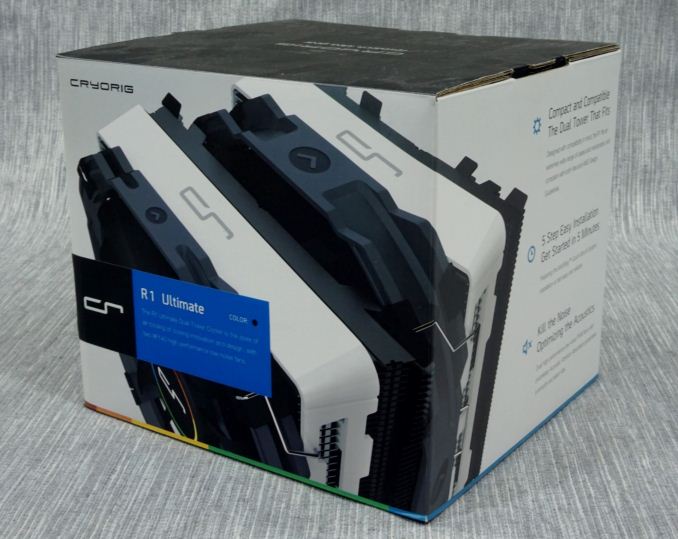
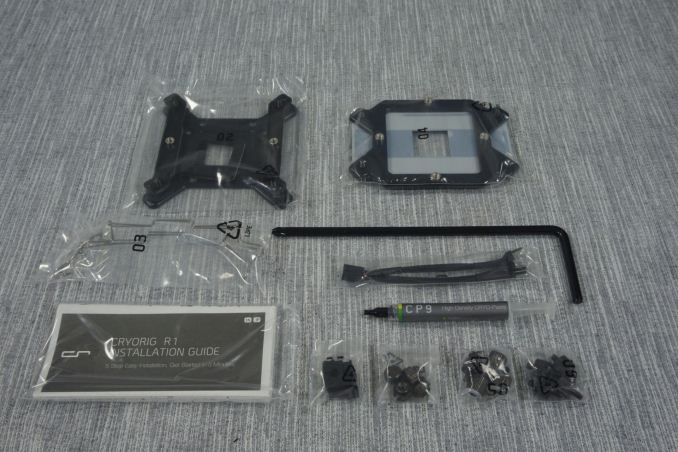
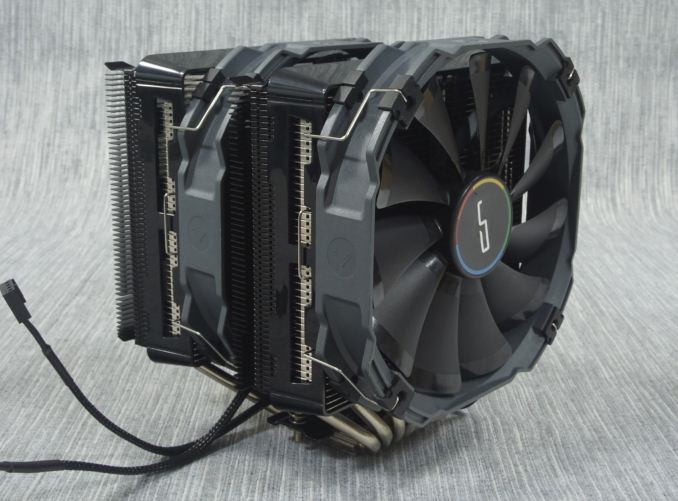
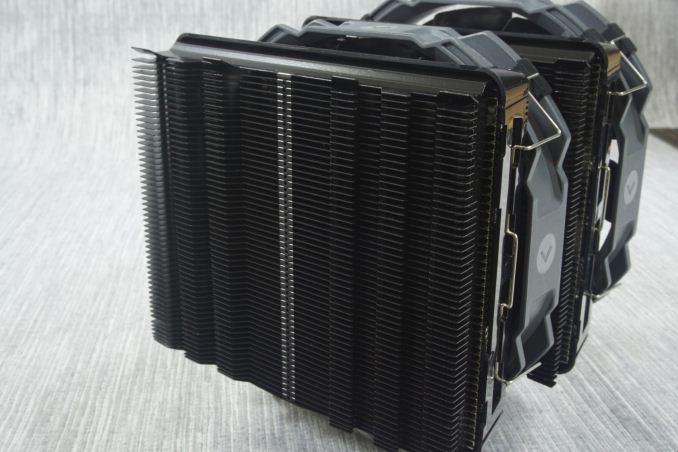
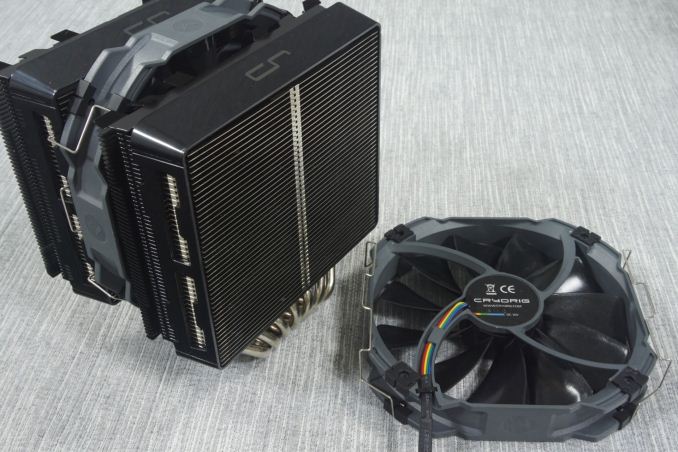
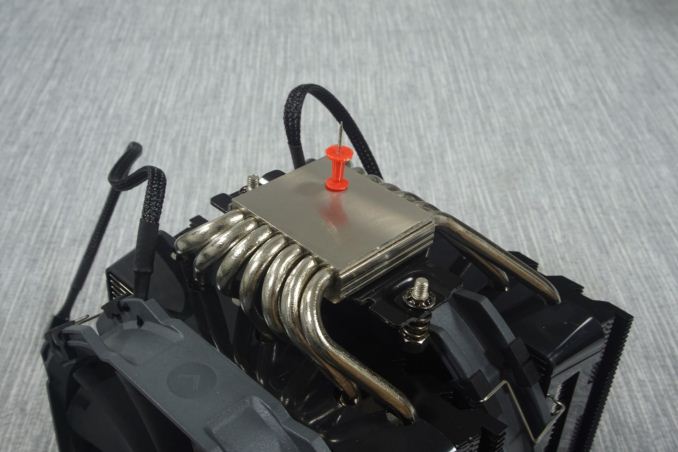








135 Comments
View All Comments
zodiacfml - Tuesday, July 7, 2015 - link
Someone should test for this. It is quite plausible as it will take time to increase the temperature of water/coolant in the system. Yet, for longer and continuous loads, surface area matters to dump heat in the environment which AIO coolers has less to a similarly priced Big Air cooler which shows in benchmarks.Navvie - Tuesday, July 7, 2015 - link
Pretty good.It'd be nice if there was a base line (say intel's current stock cooler) and an AIO water cooler to show the difference between a top tier air cooler and what many consider to be the next step.
One point, SPCR always test each cooler with a 'reference' fan, making it easier to compare the heatsink's efficiency. Can't help but feel you didn't complete the task you set out to by levelling the playing field with your simulated CPU heat source.
maximumGPU - Tuesday, July 7, 2015 - link
Great roundup! i for one still believe high end air a good alternative to water if you want dead silence.What i still can't understand is how can Nocuta get away with shipping the most expensive air cooler, likely to be used by enthusiasts who care about aesthetics, with the most hideous fan colours?
'nar - Tuesday, July 7, 2015 - link
Noctua colors are odd, but I think it forces you to consider performance more than aesthetics. They do look nice, but not "cool" - no pun in tended.Dead silence basically depends on how much heat you need to dissipate, temperature of ambient air, surface area of fins/radiator, air flow, and heat transfer capability of the cooler. Or more basically, how easily you can transfer heat from CPU to the air. Water increases the efficiency of heat transfer, so once you reach a certain power level they will overtake HSF's. They will never be as quite as a good HSF, at least not on low-power CPU's that arguably do not need anything but the stock cooler to begin with.
xthetenth - Tuesday, July 7, 2015 - link
Noctua gets away with those colors entirely because they're Noctua. Yes they're not pretty colors, but unlike nice bright/garish colors they are an unmistakable sign that they're the best or at least tied for best.piroroadkill - Wednesday, July 8, 2015 - link
Your keyboard seems to have a problem, you've typed "hideous" when clearly "fantastic" would be better. Noctua fans are neat.Beaver M. - Wednesday, July 15, 2015 - link
Well, serious people are more likely to buy Noctua anyway. And no serious user cares about what the fans look like, and even if they did, they would still take the Noctua, since you can CLEARLY see the extremely high quality they are just by looking at them. Windows in cases and other stupid bling bling is for the PC-ricer gang. They only choose after looks anyway, and dont care if their fans make noises from day one.PrinceGaz - Tuesday, July 7, 2015 - link
Excellent review of what seem to be very good HSFs throughout (but then again, you did ask them to send their best).A comparison with the stock Intel cooler as supplied with something like the 4790K would be nice, as that is what any expense on a third-party cooler must be compared against. How would the stock-cooler compare at 340W? I was very impressed with the degC/W figures for all those coolers; it almost makes 340W seem an amount of heat that can be dealt with, though I'm thinking it's crazy.
As well as the stock-cooler from a highish end CPU, one or two commonly used AIO liquid-coolers needs to be added to provided a second comparison point, as these high-end air-coolers are presumably expected to be near, possibly even better than a liquid AIO.
I love the fact you are using a properly designed heating rig, and your comprehensive review, but I came away thinking: they're good! But I've no idea how much better they are than the stock cooler, or how any of them would compare with the liquid AIOs also available, both in terms of cooling or noise.
Sivar - Tuesday, July 7, 2015 - link
This is probably the best CPU cooler article I've read (and I read such articles when Anandtech when it was on Geocities).Excellent writing, useful measurements, and a cogent conclusion. Thank you, Emmanouil!
orangesky - Tuesday, July 7, 2015 - link
SilentPcReview just posted a review of the new Scythe Ninja 4: http://www.silentpcreview.com/article1462-page1.ht... The review includes some good comparison tables with many of the popular air & water coolers.Sounds like a pretty decent option, and probably the best Ninja since the original.